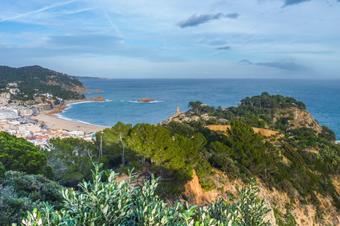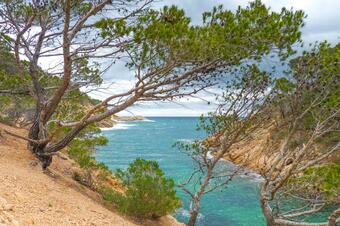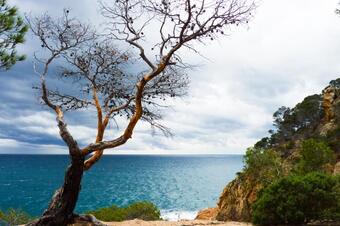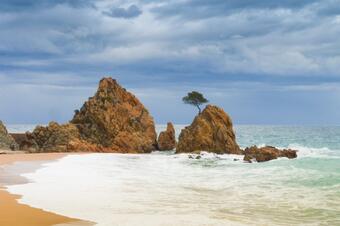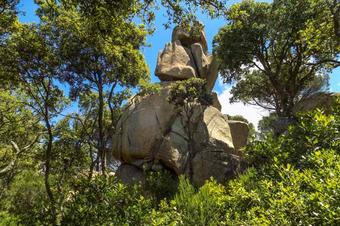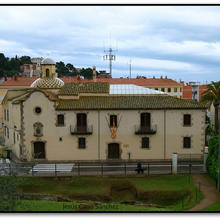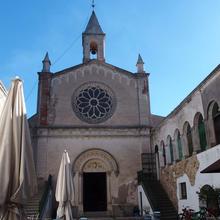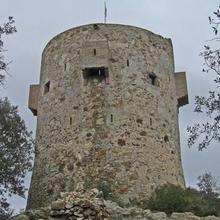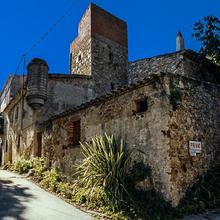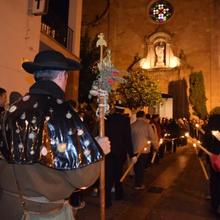Presentation
The pearl of the maritime’s Selva
Tossa de Mar is located in the middle of the coastal strip of the Selva region, between Lloret de Mar and the town of Sant Feliu de Guíxols, at the bottom of a valley where it forms and runs Tossa’s stream at the foot from the massif of Ardenya and Cadiretes.
Upon the 12th and 13th centuries, the castle was built, nowadays disappeared, and the settlement and fortification of Vila Vella is encouraged, arriving to the present day as the only old town that preserves the walls of the Costa Brava. From the 16th century onwards, the population began to expand outside the wall through the neighborhood of Sa Roqueta and following the entire border of the Camí Ral forming the current Vila Nova.
The town has grown moderately since the second half of the twentieth century, given to tourist activity and currently (in 2018) it has around 5,550 registered inhabitants. Its floating population, however, can triple mainly in the summer. The municipality, in addition to the old town and its more modern part, counts on some urbanizations.
The main economic activity of Tossa has always been fishing and a weak cabotage navigation until in the nineteenth century the “cap” industry came, which fell in a long period of regression to almost disappear as of the arrival of the tourist activity of 20th century, currently ubiquitous but moderate, especially in relation to neighboring populations.
The rocky and rugged terrain of this part of the Costa Brava, which forms small beaches and narrow coves, and the backdrop of forest mountains, with predominance of pine trees and cork oaks, are the main characteristics of the landscape of the area, one of the highest priced of the Catalan coast.
In the festive calendar, the Vot del Pelegrí, for Sant Sebastiá, stands out. In addition, Tossa celebrates two major parties: the Festa Major d’hivern, in honor of Sant Vicenç, a parochial landlord, on January 22nd, and the Festa Major d’estiu, in honor of Sant Pere, the patron saint of fishermen, on June 29th. Also, Corpus is celebrated, with the traditional carpets and crosses of flowers; the Festa de la Santa Creu, on May 1st; Aplec de Sant Grau, in October; Aplec de la Mare de Déu de Gràcia, in May; Aplec de Sant Benet, in July, and the traditional “havanera” choirs, sardinadas, etc., especially with the arrival of the good weather.
Did you know...?
Tossa retains the Vot del Pelegrí, for Sant Sebastià, when the pilgrimage ritual of round trip pilgrimage with all its entourage is set in motion until the chapel of Sant Sebastià in Santa Coloma de Farners, established tradition from a population vote in the 15th century during an epidemic plague.
Don’t miss...
“Toquen a Córrer i Ses Nou Sardanes” event, a very lively popular gallop night dance that is shares the fest with nine sardanas, celebrated on July 2nd, festival of the Mare de Déu del Socors.
What to do...?
The visit to the Tossa Museum and the Interpretation Center of the Lighthouses of the Mediterranean (Centre d’Interpretació dels Fars de la Mediterrània), located in the facilities of Tossa’s old lighthouse, at the top of the coastal hill that houses Vila Vella, stands out for one of its slopes.
When to go...?
If we go there around the middle of March you will be able to participate in the “Cimitombada”, the popular walk that organizes the Excursionist Group of Tossa every year, an ideal time to get to know more closely the forested surroundings of the town.
Sorroundings...
Near Tossa we can enjoy the itineraries that the municipality of Sant Feliu de Guíxols offers in Natura Local’s app.
Contact telephones
Links of interest
Territorial management body in the area of the Ardenya and Cadiretes massifs.



